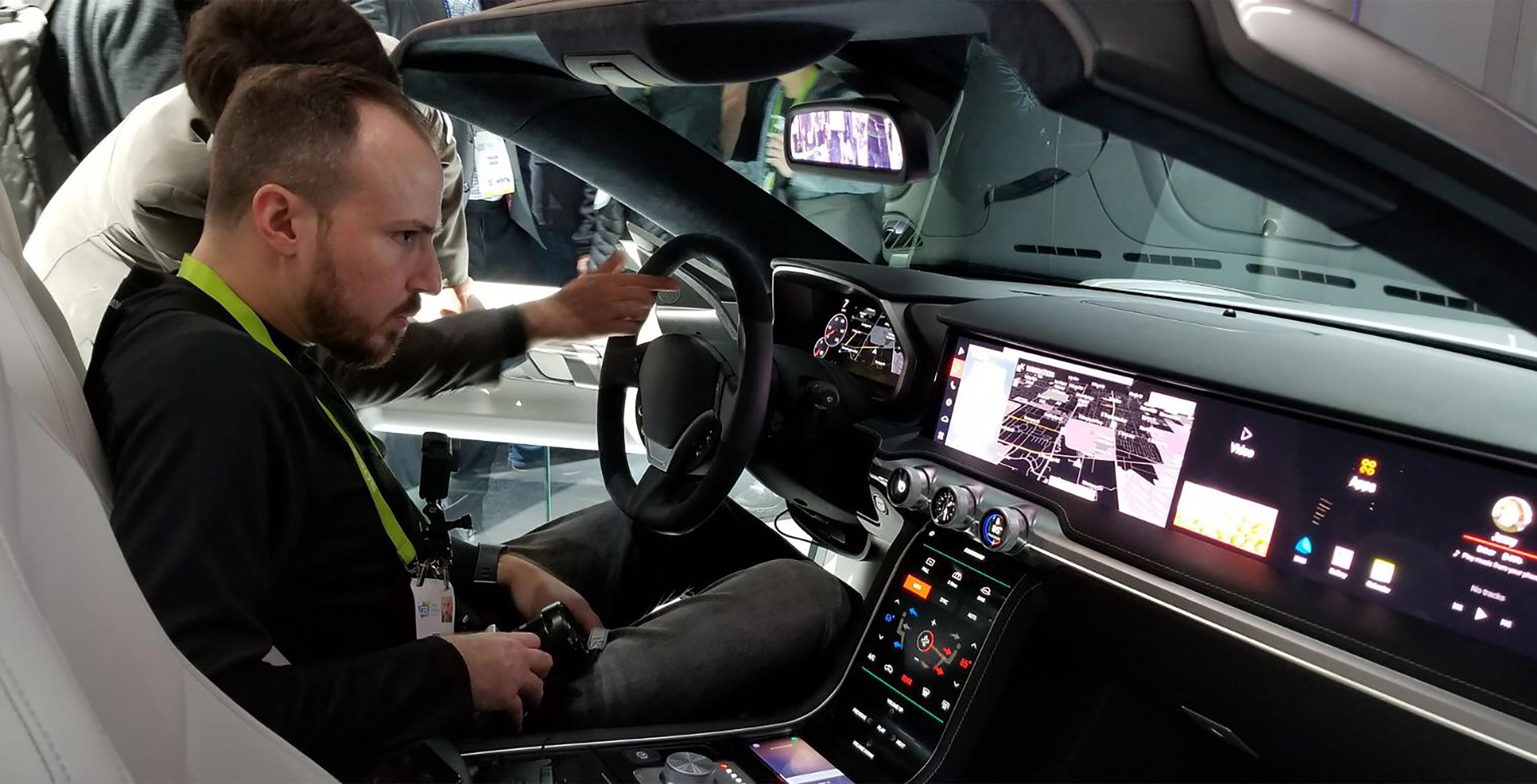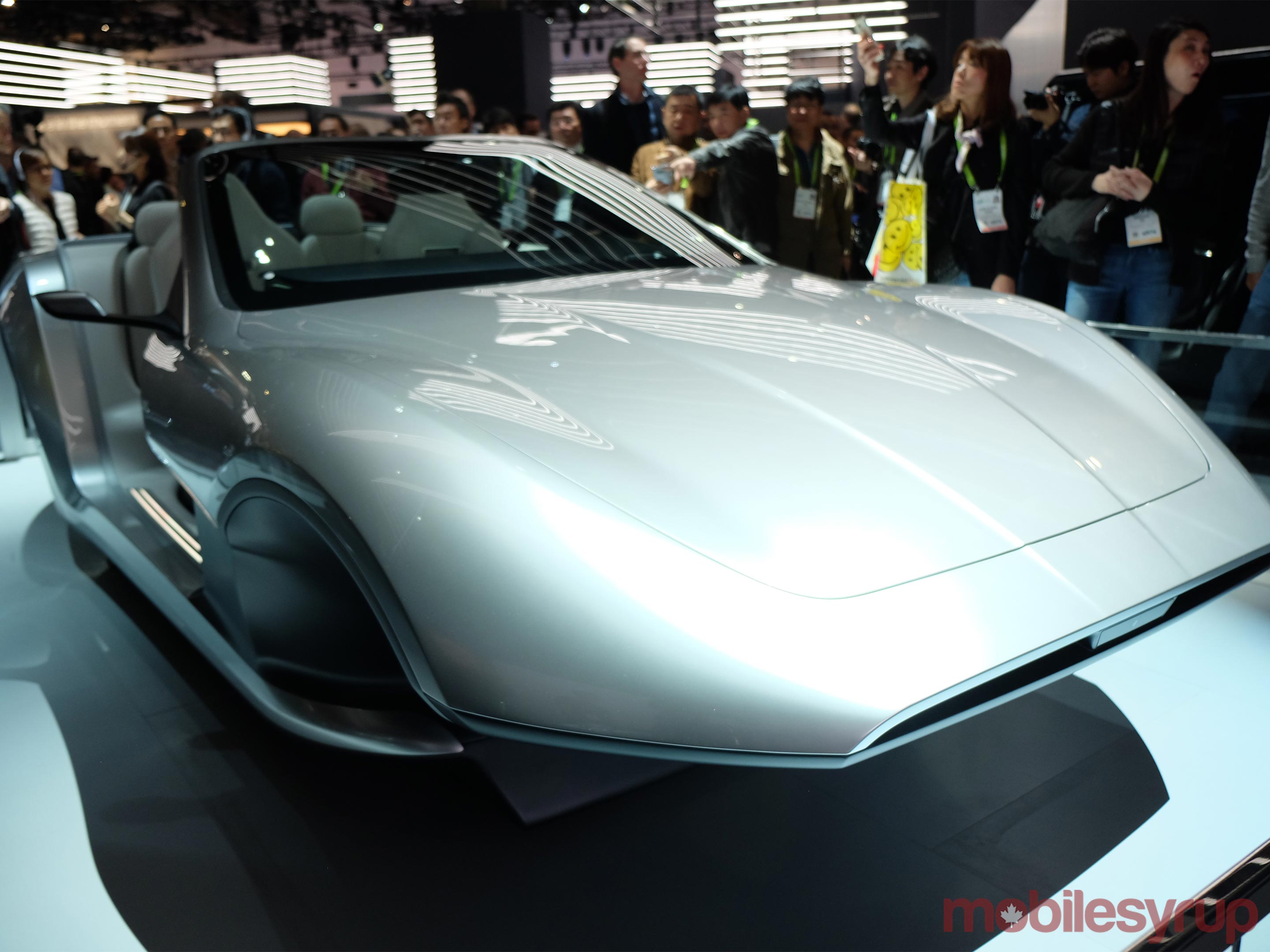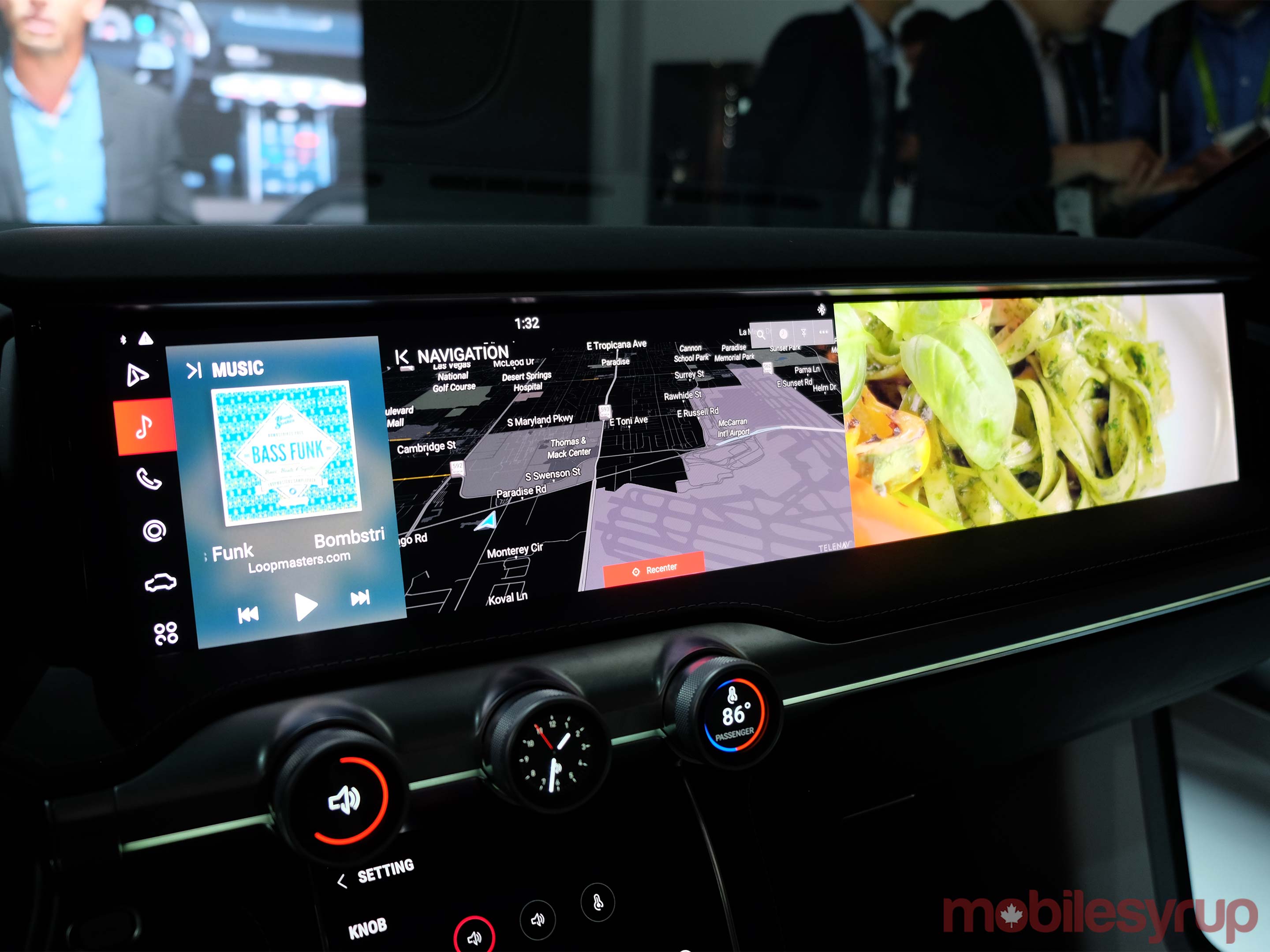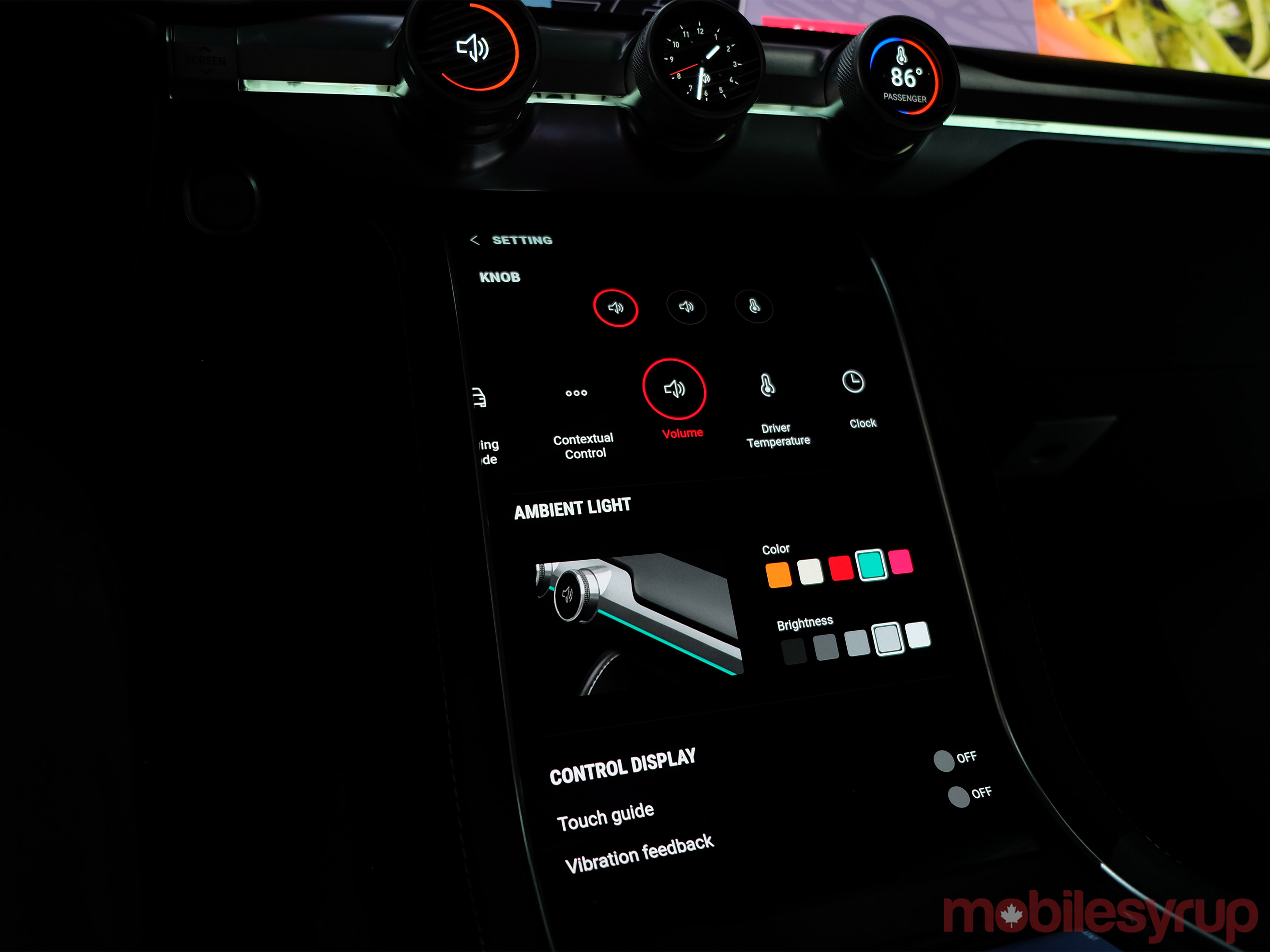
If it were up to Samsung, just about every conceivable connection would be possible in the car. Showing off the company’s vision for what 5G will do in the vehicle, I got to go hands-on with its concept Intelligent Digital Cockpit.
Samsung describes its connected car as “the industry’s first 5G-ready automotive solution,” which was referring to the wider Telematics Control Unit (TCU) that would power it all. It’s really the first we’ve seen of what acquiring a telematics firm like Harman means for Samsung, which made no bones about wanting in on the connected car trend.
The digital cockpit is more than just a combination of screens, it’s a reflection of the car being an integral piece of the infrastructure puzzle through TCU. In a video shown during the company’s opening keynote, it visualized a world where vehicles could foster communication that was both instant and highly contextual.
A driver could know what was in the fridge on the way to the grocery store, or a child could know that a parent was approaching in the car while playing a game on a phone. The gist is that the car is connected to everything, including devices in the home.
Cellular is everything

From a TCU standpoint, that would run off the Cellular Vehicle-to-Everything (C-V2X) 5G platform Qualcomm is spearheading with Ford. Being open-source, any automaker or supplier can join, making it a focused attempt at building an industry standard.
Those industry-led attempts don’t always go well, so only time will tell how it turns out. Chances are, government regulation and consumer usability will have the larger impact.
Samsung looks to be going on its own to some degree, trying to utilize its SmartThings and Bixby services to enable much of this seamless connectivity.
Screens everywhere
Getting into the digital cockpit, I had about four different screens to look at. The 29-inch QLED display that ran across the dash being the most prominent. An OLED panel was situated underneath toward the centre console, with another OLED for the digital instrument cluster in front of the steering wheel. Capping it all off was an LCD in the rearview mirror.
The vehicle’s controls were largely focused on the centre screen, with navigation and car diagnostics right above in split-screen. A video played on the rest of the dash display facing the passenger. There were steering wheel controls and physical knobs for controlling climate, volume and music playback, among other things.
The idea is to have different profiles for the driver and passengers to customize the whole experience. On top of that, you would have access to various services, augmented reality content and other personalized items, including a direct line to compatible devices back home, as noted earlier.
All of this would also run on Android, making phone integration all the more scalable. This wasn’t Android Auto, but rather some other form of the operating system that was built with these services in mind. At one point, I saw a notification come in on the dash screen that looked the same as it would on a phone.
I could swipe or select apps in the same way. There are a lot of possibilities in how such a thing would work, but the software I saw was clearly not final in any particular sense.
It is being designed with autonomous driving in mind, which is why screens are so dominant.
Drvline
Which leads to Drvline, the company’s upcoming modular autonomous driving platform. The idea here is to upgrade a Level 3 autonomous vehicle to Level 4 or Level 5. It’s not all that different from how a TV’s image quality could be up-scaled from, say, 1080p, to 4K.
To pull this off, Samsung would need to get support from automakers and suppliers, along with the necessary infrastructure. Bixby’s artificial intelligence, coupled with sensory technology and good cameras would make up the bulk of such a system.
One of the visions for this combination is to have the AI use augmented reality to take over the drive after it learns a common route the driver takes. Samsung calls it a “virtual co-passenger” but didn’t provide too many details.
The company expects to launch its Drvline system sometime this year.
MobileSyrup may earn a commission from purchases made via our links, which helps fund the journalism we provide free on our website. These links do not influence our editorial content. Support us here.





